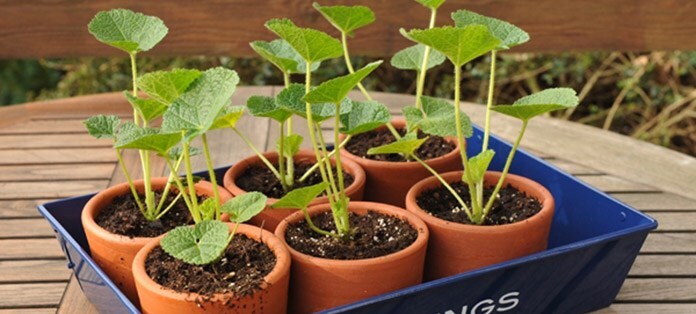Crocus care tips for July
Summer cuttings
Taking cuttings is one of the great pleasures of summer gardening. You can propagate a wide range of plants at this time of the year for little or no cost. Nearly all your favourite shrubs and herbaceous plants as well as many climbers are easy to root from cuttings taken now. With some you need to select the thrusting sappy shoots while others are easier to root from new shoots that are starting to ripen at the base. Don’t be put off by books that say that a particular plant is difficult to root…you’ve got nothing to lose, so give it a go!
TYPES OF CUTTINGS
Softwood cuttings: These are taken from actively growing new shoots, often root more quickly, but losses through wilting and rotting can be greater.
Semi-ripe cuttings: These are taken from new shoots that have finished growing with fully developed leaves and a base that is starting to turn woody. Semi-ripe cuttings are easier to handle and are more robust and less liable to wilt, but often take longer to root.
PROPAGATING HERBACEOUS PLANTS
Although most books tell you to take cuttings from herbaceous plants in spring as new shoots are produced, they will root just as well from cuttings taken now. This also helps to spread the workload from the busy spring period.
Once early performers have finished flowering, many produce a flush of new growth. Those that don’t can be encouraged to do so by dead-heading, watering and feeding. Many early flowering herbaceous plants produce new shoots from the base, which make ideal material for summer cuttings. Spreading types tend to produce new extension growth from existing shoots, which also can be used to make cuttings. In either case, each cutting needs to be 10-15cm long. A few mat-forming perennials, such as ajuga and low-growing campanulas, produce runners after flowering. These can be rooted in situ using a pot sunk rim-deep into the soil near the parent plant, or prepared as regular softwood cuttings. Trim the cutting just below a leaf joint and remove the lowest pair of leaves.
Plants that flower during late summer or early autumn can be propagated now from stem cuttings taken from the thrusting new shoots. Normally, just the tip of the stem is used, but with a few easy-to-root subjects, such as phlox and sedum, you can use sections of the stem as well.
PROPAGATING SHRUBS
Most shrubs are easy to root from cuttings taken at this time of the year. However, it’s a common fallacy that shrubs have to propagated from semi-ripe cuttings. In fact, many root more readily from softwood cuttings provided you do not allow them to wilt. Most shrubs can be propagated from the non-flowering shoot tip, cutting just below a leaf joint and removing the lower leaves. The prepared cutting should be 10-15cm long depending on the type of growth. Once again, very easy-to-root shrubs, such as artemesia and buddleja can be rooted from cuttings taken part-way down the stem as well. You’ll getter better results from some shrubs, including deciduous azaleas, ceratostigma, chaenomeles, genista, lavender, pieris, sage, viburnum and weigela, taking semi-ripe cuttings trimmed from the point it joins last year’s growth. A few shrubs, including camellia, fatsia and mahonia, root better from leaf-bud cuttings. This is simply a mid-stem cutting trimmed just above a leaf joint with a short piece of stem, say 5cm long, below it.
PROPAGATING CLIMBERS
By their very nature, climbers tend to produce shoots with long stems between leaf joints. This means that preparing stem tip and leaf bud cuttings are the most practical ways of propagating most climbers. Many popular climbers, including clematis, jasmine and honeysuckle, also produce side shoots from horizontally trained stems that can be used to make semi-ripe basal cuttings – trimming the cutting at the point it joins last year’s growth.
ROOTING CUTTINGS
You can root a handful of cuttings in a pot of fresh, moist cuttings compost, covered with a polythene bag to prevent moisture loss and wilting. More ambitious propagation can be achieved by constructing a mini-polythene tunnel in a lightly shaded border. The soil needs to be well drained and thoroughly prepared beforehand. The polytunnel can be made from little more than a couple of old polythene grocery bags, supported on wire hoops made from half-a-dozen old wire coat-hangers. Split the carrier bags and tape together to make a single sheet and unravel the coat-hangers before bending into simple hoops. Dig out a 20x50cm shallow trench that’s about 5cm deep, then fill it with well-drained cuttings compost mix. Water thoroughly, before inserting the cuttings. Push the wire hoops into the soil either side of the cuttings bed (spacing them about 10cm apart) to support the polythene cover and prevent it touching the cuttings. Weigh down the edges of the polythene either side and at the ends with soil or stones. Check the cuttings regularly to see if they need watering and to remove any that showing signs of rotting. Pot up the well-rooted cuttings individually during the autumn, ready for planting out in the garden next year.
Six tips to cutting success
- Always use a clean, sharp knife or razor blade
- Select vigorous, new growth that’s free of pest or disease
- Where possible select non-flowering shoots, otherwise remove flowerbuds when preparing the cuttings
- Put material in a polythene bag as it is collected to help prevent it wilting
- Prepare the cuttings as soon as possible after cutting the material from the parent plant
- Use hormone rooting powder or gel for difficult to root subjects




